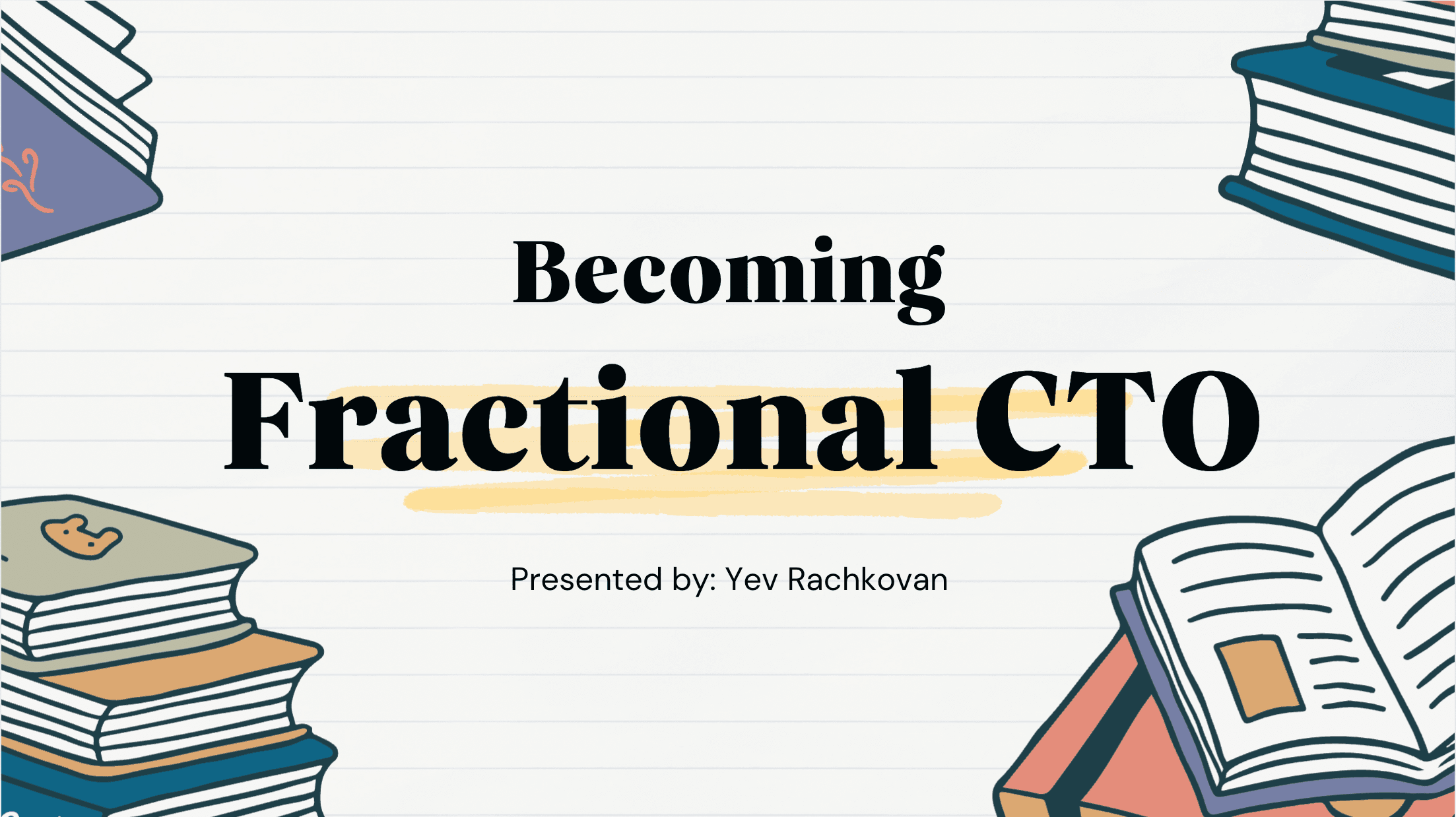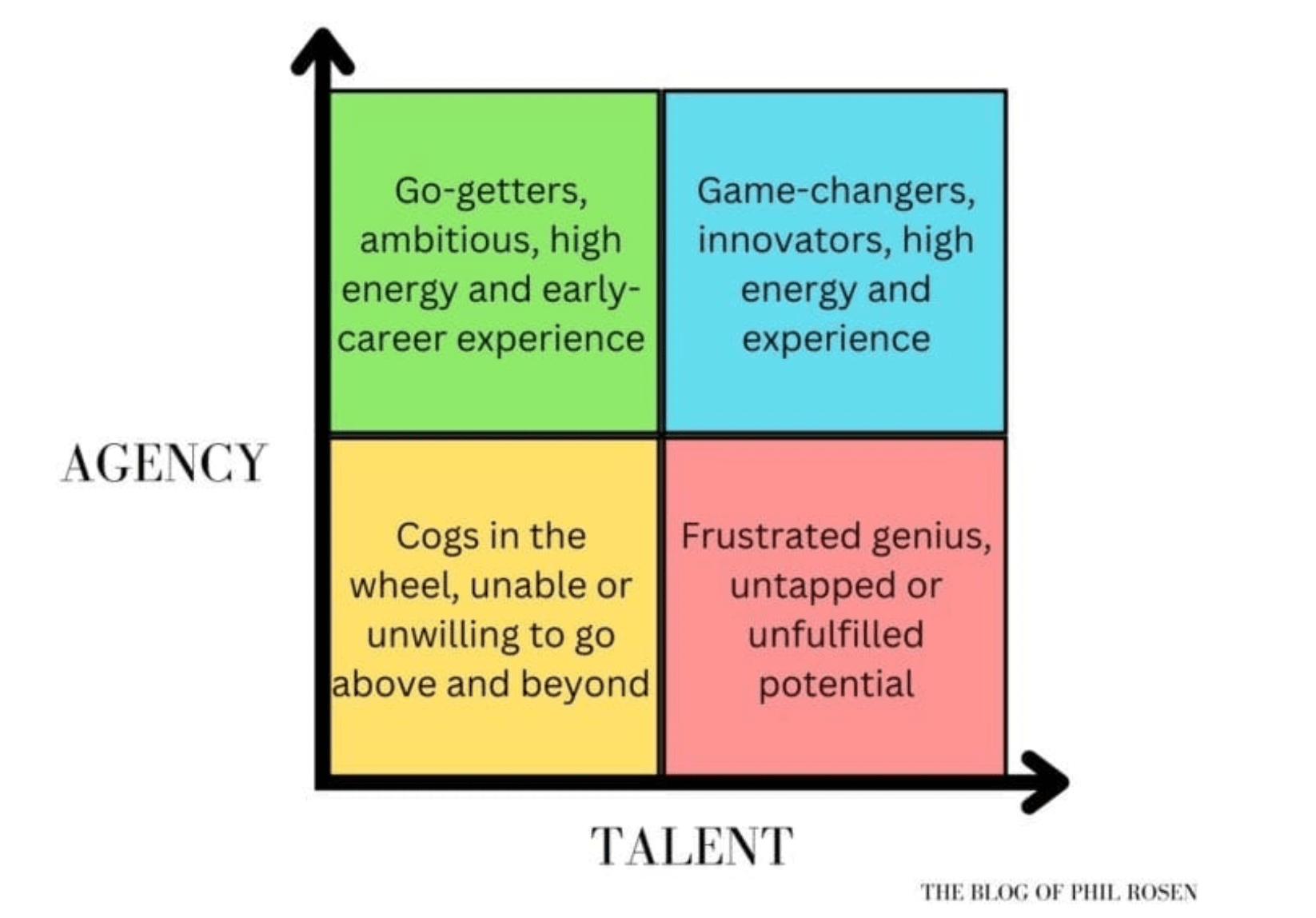A Beginner's Guide to Becoming a Fractional CTO

Welcome to the world of the Fractional Chief Technology Officer (CTO). This role is an exciting path for experienced technologists who want to make a significant impact on multiple businesses without a full-time commitment to just one. This guide will break down the essential skills, core responsibilities, and strategic mindsets you'll need to launch a successful career in this field, based on practical, real-world experience.
What Does a Fractional CTO Actually Do?
In simple terms, a Fractional CTO is a part-time technical expert hired to guide a company's technology strategy and execution. While the day-to-day work can vary, your primary responsibilities will fall into four key areas. Your job is to improve the company's performance across all of them.
- Team Strategy: You will advise leadership on team structure, helping them understand what roles they are missing, what roles they may have over-hired for, and how to organize their people for maximum effectiveness.
- Product Quality: You are responsible for the overall health of the technology. This involves ensuring best practices are followed, from high-level architecture down to daily code reviews, so that the product is scalable, maintainable, and aligned with business goals.
- Process Efficiency: Many companies, especially startups, lack structured processes. You will introduce and oversee critical methodologies like Agile, establish routines like sprints and backlog grooming, and ensure the team is operating efficiently.
- Decision Making: This is the most critical responsibility and what clients need the most help with. You will guide owners and stakeholders through complex technical and strategic decisions, from choosing the right architecture to deciding whom to hire next.
Ultimately, the goal of a successful engagement is to build such strong leadership and processes within the company that it no longer needs you. Your job is to make yourself obsolete.
These core responsibilities demand a specific set of skills that go beyond typical software development.
Essential Skills & Experience
While the role is deeply technical, succeeding as a Fractional CTO requires a unique blend of hard skills, people-centric soft skills, and specific, diverse experiences. Here is a checklist to gauge your readiness.
Hard Skills
- Code Review & Architecture You are hired for your technical expertise and must be able to guide developers and direct the right way of doing things. Soft Skills
- System Thinking You need to see the entire company as a system and understand how small fixes in one area can improve the whole.
Soft Skills
- Research Abilities You will often work with industries you know nothing about and must be able to quickly learn the specifics, like laws or domain knowledge. Soft Skills
- Conflict & Confrontation You cannot be afraid to tell people, including leadership, when something is wrong. This is a difficult but essential part of the job.
Experience
- Product & Project Management Many companies lack dedicated product managers. You will often need to fill this gap to ensure work is properly specified and managed.
- Multiple IT Teams & Startups Having diverse experience shows you that there is no single "right way" of doing things and helps you apply efficient, startup-like processes.
Beyond these skills, however, there is one single quality that truly defines a great Fractional CTO.
Cultivating High Agency
High agency is the single most important quality for a Fractional CTO. It is the core mindset that enables you to deliver value where others cannot. "High agency is control over decisions... you are expected to create projects, you will not have exact directions, and you need to figure out what to do because business owners usually don't know themself what to do... you just cannot say I don't know." Agency is more important than raw talent or experience alone. Your ability to initiate action and make decisions independently is what clients are paying for.

This high-agency mindset can be expressed in different ways depending on your personality and the client's needs.
The Four Archetypes of a Fractional CTO
You don't have to be an expert in everything. Successful Fractional CTOs often lean into a particular style, or archetype, that best suits their strengths and the client's situation. The "Gordon Ramsay" This is the crisis manager. Like the famous chef in Kitchen Nightmares, you are brought in when a company is "on fire." Your approach is direct, brutally honest, and focused on fast execution. It's also methodical; you often start by experiencing the product as a client before diagnosing internal issues, resolving conflicts, and transforming the team. • Best for: Early-stage startups, teams that have messed something up, or companies with deep-seated problems and a massive backlog. The "Varys" This is the political advisor. Like the character from Game of Thrones, your power comes from your vast network and your deep understanding of stakeholder dynamics. You work behind the scenes, using pre-emptive alignment to guide strategy. For example, before a big board meeting, you hold separate calls with each key member to persuade them upfront, ensuring consensus before the meeting even begins. • Best for: Companies that are scaling, have good processes but need to avoid mistakes, and have complex stakeholder environments with competing interests. The "Yoda" This is the mentor. Your focus is on long-term sustainability. Instead of solving problems yourself, you coach team members, grow internal leadership, and build processes that will last long after you are gone. Your goal is to make the team independent. • Best for: Situations where you transition from a "Ramsay" role, or for companies that need to build sustainable, independent teams for the long run. The "Spock" This is the deep technical expert. You are brought in to solve a single, highly complex problem that requires specialized knowledge. Your focus is less on human-centric management and more on architecting a brilliant technical solution. • Best for: Projects requiring a specific, deep technical solution where human-centric management is less of a priority (e.g., deep tech, LLMs, specific architecture). Regardless of your archetype, a core function is guiding decisions. Having a structured process for this is one of the most valuable things you can bring to a client.
The Art of Decision-Making
Many companies make decisions impulsively. By introducing a structured, repeatable process, you can immediately provide immense value and improve outcomes.
- Understand the Problem: Use system thinking to identify the root cause, not just the symptoms. An underperforming employee might not be a "bad employee" but a symptom of a problem in HR, culture, or management.
- Set SMART Goals: Translate vague visions (like "be like Apple") into Specific, Measurable, Achievable, Relevant, and Time-bound objectives. This creates clarity and a benchmark for success.
- Generate Alternatives: Be an "early adopter" by researching a broad range of modern solutions. Remember that advice from your personal network is often more valued by a CEO than a suggestion from ChatGPT, so cultivate your connections.
- Evaluate Options: Create a SWOT (Strengths, Weaknesses, Opportunities, Threats) analysis for the top two or three options. This simple step is highly impressive to company management and is something most developers skip entirely.
- Talk to Stakeholders: Your superpower is communicating complex technical topics in simple, clear language. Be prepared to create presentations to align the board of directors, investors, and other key stakeholders.
- Make the Decision: Guide the final choice with a powerful framing question: "Imagine Forbes writes an article about the decision we made and how it impacted our company. What do you want that headline to say?" This helps align the decision with long-term vision and ambition.
- Implement the Decision: Oversee the execution, ensuring foundational processes like Agile sprints and a well-managed product backlog are in place to support the team. Now that you understand the skills and processes of the role, the final challenge is getting hired.
Landing Your First Role
Finding your first client can feel daunting, but there are specific types of companies and people who are actively in need of your skills. Here are the best places to look:
- Angel Investors: They have a portfolio of early-stage startups that will inevitably run into technical challenges. Building relationships with investors can lead to an infinite stream of warm introductions.
- Non-technical CEOs of new startups: Look for companies on LinkedIn or Crunchbase that don't have a listed CTO. These founders often mistakenly think they can rely solely on a development agency and will need your strategic guidance.
- Non-technical CEOs of established businesses: Find successful non-tech businesses (e.g., a blogging company on WordPress, a school on Teachable) that want to build their own technical platform to reach the next level of growth.
- Business Consultants: Network with consultants who help businesses grow their revenue. They often identify technology as a bottleneck and can provide warm introductions to you as the solution. When you reach out, your approach is everything.
Pro Tip: Sell with Value, Not a Resume. Avoid generic, AI-generated proposals. Your high-agency approach should start with the first contact. Instead of listing your experience, do deep research on the client and provide immediate value in your proposal. For example: "I see you're building an NFT marketplace. You could save weeks of development time by using this open-source project as a foundation or this specific library for authorization." For a high-impact approach, you can even offer a condensed, free 'health check' of their processes or codebase to uncover pain points and prove your value immediately. This practical advice demonstrates your expertise upfront and sets you apart from 95% of other applicants.
Link to a more detailed video about being Fractional CTO: https://www.youtube.com/watch?v=VK-Y-QfuJxg